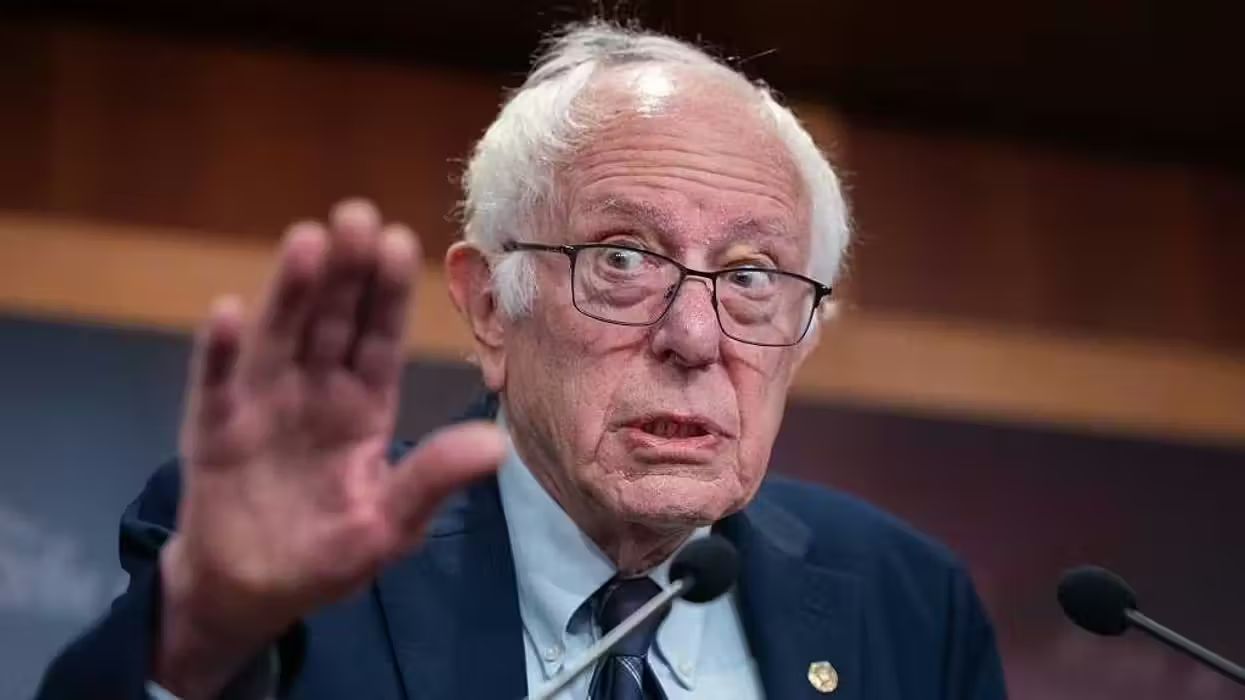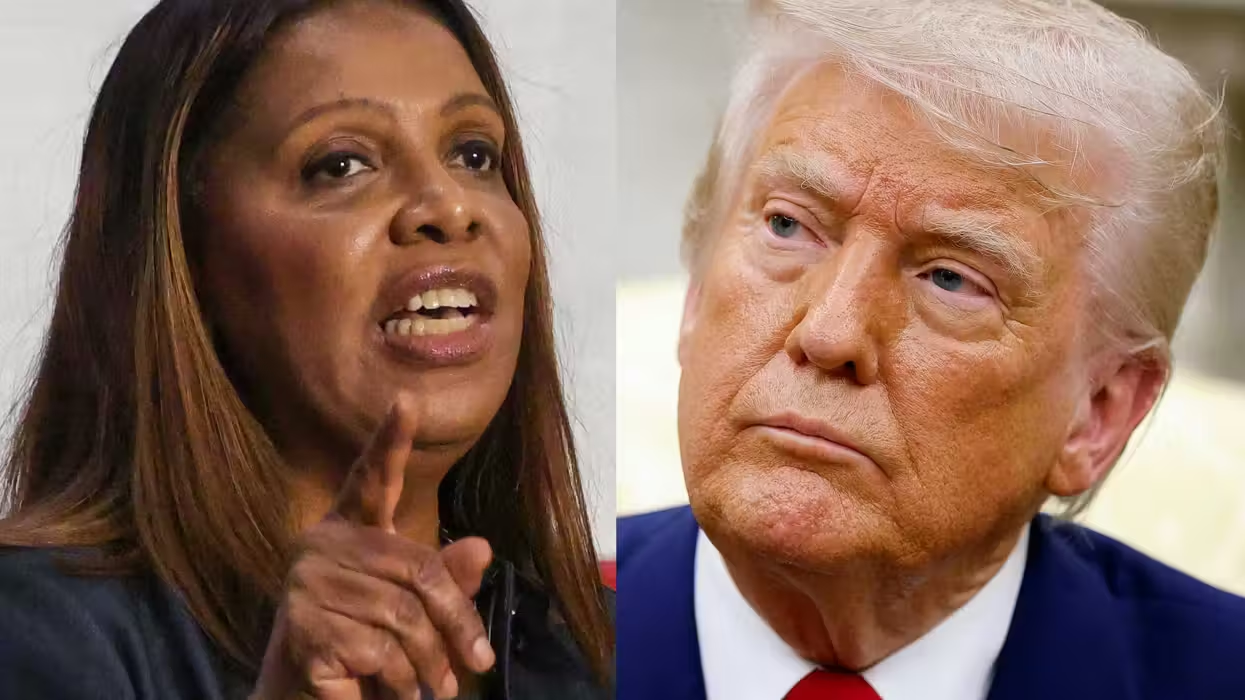 Thomas Jefferson
Thomas Jefferson
Whenever the subject of gun control comes up, supporters of the practice (generally of the liberal persuasion) inevitably run up against one major roadblock to pushing sweeping laws -- specifically, the United States constitution, and its second amendment, which protects a sweeping right to keep and bear arms.
Thus, experts have read the amendment in a way that hasn't banned the ownership of weapons altogether. This reading has only been strengthened by recent Supreme Court cases such as District of Columbia vs. Heller, and McDonald vs. Chicago, which have codified the right to keep and bear arms as being as important as other rights such as the right to free speech.
Undoubtedly, this is frustrating to many opponents of gun rights, since even in moments of widely felt national tragedy like the present moment, their agenda requires a constitutional justification as well as a political one - a fact that puts them at a permanent disadvantage relative to gun rights supporters.
Which is why opponents of gun rights have seized on a well-worn constitutional argument in the wake of the shootings at Sandy Hook Elementary. That argument - an old chestnut of the anti-gun community - is that the second amendment doesn't actually grant every American a right to keep and bear arms, and is in fact obsolete because it only applies to members of state militias. This argument focuses on what legal scholars call the prefatory clause of the second amendment, bolded below for emphasis:
A well regulated militia being necessary to the security of a free state, the right of the people to keep and bear arms shall not be infringed.
So since the amendment itself mentions the maintenance of "well regulated" militias as the purpose of the right to keep and bear arms, the argument goes, gun control is perfectly permissible so long as it only targets private citizens and not state militias. In fact, the liberal Daily Beast published an article on Tuesday making this exact argument.
The Argument for "Militia-Only" Gun Ownership
So well-worn is this argument that Justice John Paul Stevens used it in his dissent in District of Columbia vs. Heller (emphasis added):
The Second Amendment was adopted to protect the right of the people of each of the several States to maintain a well-regulated militia. It was a response to concerns raised during the ratification of the Constitution that the power of Congress to disarm the state militias and create a national standing army posed an intolerable threat to the sovereignty of the several States. Neither the text of the Amendment nor the arguments advanced by its proponents evidenced the slightest interest in limiting any legislature’s authority to regulate private civilian uses of firearms. Specifically, there is no indication that the Framers of the Amendment intended to enshrine the common-law right of self-defense in the Constitution.
As did Justice Stephen Breyer in the same case (emphasis added):
The majority’s conclusion is wrong for two independent reasons. The first reason is that set forth by Justice Stevens—namely, that the Second Amendment protects militia-related, not self-defense-related, interests. These two interests are sometimes intertwined. To assure 18th-century citizens that they could keep arms for militia purposes would necessarily have allowed them to keep arms that they could have used for self-defense as well. But self-defense alone, detached from any militia-related objective, is not the Amendment’s concern.
Of these two Justices, Breyer remains on the court, and would presumably be all too happy to resurrect this argument to limit the scope of the Second Amendment. So at the level of legal strategy, it is easy to see where this argument - that the Second Amendment is much narrower in scope than a generalized right to bear arms - might be appealing.
 Illinois gun owners and supporters file out NRA applications while participating in an Illinois Gun Owners Lobby Day convention before marching to the Illinois State Capitol Wednesday, March 7, 2012 in Springfield, Ill. Credit: AP
Illinois gun owners and supporters file out NRA applications while participating in an Illinois Gun Owners Lobby Day convention before marching to the Illinois State Capitol Wednesday, March 7, 2012 in Springfield, Ill. Credit: AP
The Argument Against the Liberal Interpretation
But does this interpretation actually follow from the text? Certainly, the majority opinion in District of Columbia vs. Heller, written by Justice Antonin Scalia, does not find this reasoning persuasive (emphasis added):
The Second Amendment is naturally divided into two parts: its prefatory clause and its operative clause. The former does not limit the latter grammatically, but rather announces a purpose. The Amendment could be rephrased, “Because a well regulated Militia is necessary to the security of a free State, the right of the people to keep and bear Arms shall not be infringed.” See J. Tiffany, A Treatise on Government and Constitutional Law §585, p. 394 (1867); Brief for Professors of Linguistics and English as Amici Curiae3 (hereinafter Linguists’ Brief). Although this structure of the Second Amendment is unique in our Constitution, other legal documents of the founding era, particularly individual-rights provisions of state constitutions, commonly included a prefatory statement of purpose.
Scalia's reasoning is fairly easy to understand. That is, simply saying why a right is necessary to protect before claiming that it is a right does not obviate the existence of the right once that reason ceases to be in effect.
For instance, one can imagine the founders drafting the First Amendment's protection of "freedom of the press" in order to protect the distribution of anonymously authored pamphlets, or to allow people to use privately purchased printing presses. Yet if the first amendment were phrased, "A robust distribution of political pamphlets being necessary to the maintenance of a free society, Congress shall make no law abridging the freedom of speech," would anyone seriously argue that such a right would not cover laser printing or online news organizations? Certainly, Justice Scalia (who has found that the first amendment covers things the founders never could have imagined, such as video games) would not accept such an interpretation.
Yet still, legal scholars argue over the meaning of the text. Christiane Amanpour's show on CNN featured a segment recently on this very topic:
The Context
So what's the reality of the argument?
The answer varies depending on whether one is talking about historical or legal reality. Historically, the question of what the Second Amendment is supposed to mean is almost certainly never going to be solved, because conflicting sources exist on both sides of the issue, and conflicting interpretations of those sources have already proliferated. The reason for this is partially that the gulf between militias and ordinary people was not nearly so large in 1790 as it is now, and partially because arguably the most obvious original purpose of the Second Amendment (giving citizens the means to resist the government by force) would be impossible to fulfill without extending gun rights far beyond what even their most friendly supporters would allow. In short, like the homemade printing press example above, the reasons the amendment was originally ratified are difficult to translate to a modern context.
However, in terms of the present legal regime, the answer to how the Second Amendment is likely to be interpreted for the foreseeable future is fairly easy to answer.
Legal Reality
For now, at least, the legal reality regarding the Second Amendment is that it does guarantee a right to keep and bear arms of some kind to individual citizens. Barring a massive shift in power on the court, this is unlikely to change, as five of the sitting justices voted to hold that the right exists and protects citizens against both state and federal law in the two cases cited above.
Moreover, even cases that the majority of justice disagree with are not always changed after the fact, given the varying attitudes of various jurists towards the importance of upholding precedent. For the foreseeable future, therefore, the right to keep and bear arms is a fixed reality of the American legal and constitutional landscape.
However, in practice, this tells us very little about how far that right extends, which is where the current (and future) legal debate is likely to focus. A right to own a handgun is one thing, after all, but what about the right to own rocket launchers? Miniguns? Anti-tank ordinance? An actual, physical tank? Are all of these things protected by the right to keep and bear arms? They are, after all, arms.
Fortunately for those worrying about their neighbors acquiring weapons grade helicopters, even the most stringent supporters of gun rights admit that the law allows for limits on what sort of weapons are protected, or on how those weapons might be obtained. For his part, Scalia would limit the amendment solely to weapons that can be carried by an individual human being, knocking such armaments as tanks and missiles out of contention, and admitted in the majority decision in Heller that regulations such as background checks and concealed carry permits almost certainly pass constitutional muster (emphasis added):
Like most rights, the right secured by the Second Amendment is not unlimited. From Blackstone through the 19th-century cases, commentators and courts routinely explained that the right was not a right to keep and carry any weapon whatsoever in any manner whatsoever and for whatever purpose. For example, the majority of the 19th-century courts to consider the question held that prohibitions on carrying concealed weapons were lawful under the Second Amendment or state analogues. Although we do not undertake an exhaustive historical analysis today of the full scope of the Second Amendment , nothing in our opinion should be taken to cast doubt on longstanding prohibitions on the possession of firearms by felons and the mentally ill, or laws forbidding the carrying of firearms in sensitive places such as schools and government buildings, or laws imposing conditions and qualifications on the commercial sale of arms.
This leaves gun control advocates with some degree of leeway legally in terms of what they can do to control access to weapons. For instance, it is possible to interpret that the Constitution permits bans on certain types of magazines, and given that the court has declined to invalidate a previous assault weapons ban, this too would be possible.
Is There a Bigger Issue Than Guns?
What is less clear is whether these policies would have the desire effect of stopping incidents like Sandy Hook from happening. The Daily Beast's Megan McArdle has already written a lengthy post explaining why this is almost certainly not the case (emphasis added):
You can, to be sure, name one or two things that might make a marginal difference: ban extended-capacity magazines, and require background checks for private sales. As a proponent of reasonable gun control that in some ways goes farther than current rules (I'd like to require that people pass a shooting and gun safety test before they can own a gun), these rules don't strike me as crazy.
But we are back to generic solutions. These "reasonable controls" would not, in fact, have done much to stop the horror at Newtown; Lanza's problem was not that he didn't know the four rules of gun safety, or that his aim was bad. And Lanza didn't buy the guns, so a background check would not have stopped him.
Could we go bigger? Should we ban the relatives of anxious sad sacks from buying guns? How about family friends? (Michael Carneal broke into a friend's house while they were away for Thanksgiving and stole the guns he used to shoot up his Kentucky school.) The question answers itself; the kind of all-knowing surveillance regime that this would require would be both impossible, and intolerable.
Reducing the magazine sizes seems modesly more promising, but only modestly. It takes a few minutes of practicing to learn how to change a magzine in a few seconds. Even if you banned magazines, forcing people to load the gun itself, people could just carry more guns; spree shooters seem to show up, as Lanza did, with more guns and ammunition than they actually need. In this specific case, it might well not have helped at all. Would Lanza really have been gang-rushed by fast-thinking primary school students if he stopped to reload?
Indeed, McArdle concludes, the only policy that would absolutely stop this sort of thing would be to ban all guns, categorically. And that is both politically and constitutionally impossible, and in all likelihood will remain so for the foreseeable future.
Moreover, it is not clear that guns are the issue so much as mental health is. In writing this article, we reached out to the National Rifle Association for comment, and while they declined, they did suggest David Kopel of the University of Denver as a source to talk over the constitutional niceties of this question. Dr. Kopel did not respond to a request for comment, but as it happens, he did publish a Wall Street Journal op ed on this topic recently, which we excerpt below (emphasis added):
Finally, it must be acknowledged that many of these attacks today unfortunately take place in pretend "gun-free zones," such as schools, movie theaters and shopping malls. According to Ron Borsch's study for the Force Science Research Center at Minnesota State University-Mankato, active shooters are different from the gangsters and other street toughs whom a police officer might engage in a gunfight. They are predominantly weaklings and cowards who crumble easily as soon as an armed person shows up.[...]
Real gun-free zones are a wonderful idea, but they are only real if they are created by metal detectors backed up by armed guards. Pretend gun-free zones, where law-abiding adults (who pass a fingerprint-based background check and a safety training class) are still disarmed, are magnets for evildoers who know they will be able to murder at will with little threat of being fired upon.
People who are serious about preventing the next Newtown should embrace much greater funding for mental health, strong laws for civil commitment of the violently mentally ill—and stop kidding themselves that pretend gun-free zones will stop killers.
So while the law may permit many different remedies that involve the restriction of access to guns (while staying well shy of the "Second Amendment is inoperable because of militias" theory), these remedies may not be the correct ones, according to some critics. As to what remedies would be correct, that is a topic more thorny than even the question of the original meaning of the Second Amendment, and therefore possibly beyond the powers of even the most brilliant court to solve.

 Thomas Jefferson
Thomas Jefferson






